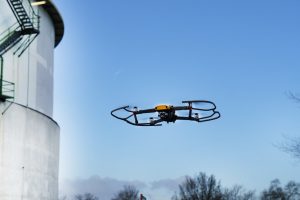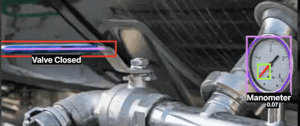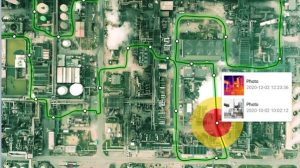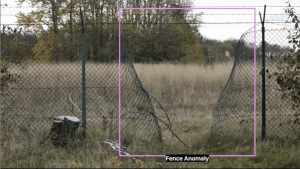Worldwide, the workforce is growing older. In the UK, the average age for retirement is about 65, and in the US and in Europe, the average is about 67, but according to the Office of National Statistics, flexible working could mean that office-based staff may stay in the workforce for longer.
While this bodes well for the office worker, older generations taking on physical, outdoor tasks such as maintaining offshore oil platforms and onshore facilities such as wind and solar farms are subject to an earlier than-needed retirement.
Marc Dassler, CEO of robotics firm Energy Robotics, wants to change this: “We’d like the baby boomer generation to stay in jobs as long as possible because they have a lot of knowledge, and they add a lot of value to our economy,” he says.
This depletion of knowlege which is not passed onto younger generations in the workplace is sometimes referred to as “Boomer Brain Drain”.
His fleet of robots enables this by taking on dangerous, dirty, and dull tasks in facilities with large infrastructure and, simultaneously, building digital twins and monitoring, in real-time, the facilities’ machines.
Tank farm drones
One use case Dassler highlights is Energy Robotics’ ‘Drone-in-a-box’ solution, which entails deploying a drone to stay resident at a location and collect continuous data.
“We’re deploying this now in tank farms,” Dassler says, including Shell Energy and Chemicals Park Rheinland site in Germany.
To inspect these tanks manually, a worker will typically climb up the 25-metre-high tank, usually containing oil, three times a week to ensure the seal on the tank roof is intact, check for the presence of rainwater within the tank, and inspect for any other faults.
“It takes a lot of time for an operator to do that for 20 tanks, it’s about eight hours per day,” he adds.

Tank farm drone in operation
“If you need to do that three times a week, you’ve already spent more than 24 hours of your 40 hours of work time running up tanks.”
Now, to reduce time, labour, cost, and accidents, Energy Robotics resident drone will be able to flutter over the tanks and collect the same data using cameras and AI technology. And it will likely be the same person previously responsible for climbing up the tank who is viewing the data from the comfort of an office.
The data is presented through high-resolution images, as well as thermal images captured by the drone, with highlighted boxes for any faults. “Those people are now sat in the operations centre, sipping a coffee and looking at the results of that,” Dassler adds,
Once the drone completes its autonomous mission, it automatically returns to its docking station to charge.
“That is a huge impact, especially if you look at, say, the baby boomer generation,” he says. “This enables them to stay longer because we’re taking away the dull, dirty, and dangerous task from them,” he reasons.
Regardless of age, Dassler claims that this technology has had a proven positive impact on worker health, because it not only takes the load off the laborious task but reduces the amount of people working night shifts, a time when accidents are most likely to occur.
For Shell, this is crucial in its step towards its own “Goal Zero” — reducing workplace accidents to nil.
Offshore facilities
Of course, this solution aims to benefit all generations and allow for the unmanning of laborious and lengthy tasks such as manually monitoring and maintaining an offshore facility.
“There are about 4000 [offshore facilities] in Northern Europe which need to be maintained and supervised,” said Dassler.
Reviewing and maintaining a facility normally entails flying a helicopter in to drop off about three people, who will walk around and check the facility, and then get picked up by the helicopter the same day or a day later.
“This is very extensive in terms of material, helicopters, and human capital.”
To tackle this, Energy Robotics makes a case for remote inspection — via the deployment of autonomous robots, including drones, and the Boston Dynamics Spot ‘dogs’, powered by Energy Robotics software, to be the eyes and ears of the facility to look out for any faults in machinery.
The robots find their way around using a digital twin they map out themselves using laser beams, and input instructions from the facility, to check machinery several times a day using cameras, sensors, and AI.
For example, the robots will look at valves and gauges enroute, and operators will receive an alert with an image if the gas pressure is reading outside of a predefined threshold range.

Manometer monitoring
“Our system is taking care and making sure that you always get consistent data.”
The data is also usually in the form of high-resolution digital images, which, with the help of AI, will display the other data points, whether it is temperature for example, or the sound of a pump if it is faulty.
Onshore future
“We are now also looking at onshore capabilities, so looking at refineries and oil and gas plants, as well as power utilities where you also have large infrastructure which needs to be maintained and supervised,” explains Dassler.

Mapped out robot mission in a gas plant
In a gas plant, robots equipped with sensitive gas detectors, for instance, will perform regular inspection rounds to ensure early detection of leaks, even in areas not accessible to fixed sensors.
Substations can be best described as the “socket” of the energy transition, transmitting electricity to various grid levels and collecting the renewable energy.
More wind and solar farms being built across Europe necessitates even more substations but there is a lack of skills within the sector.
“It’s the same problem here, due to demographic changes and the baby boomers leaving, power utility companies are under strong pressure.”
These facilities still need to be inspected and need to have eyes and ears especially because of the increased forecast of severe weather conditions and storms.
“You want to have some intelligence data coming from those substations,” he adds. “Not only to monitor the substations for the machines but also if somebody was to break in.”

Perimeter monitoring of remote substations
With this, “there’s a lot of potential to build and automate these substations, and we’re working with the big power providers right now to have fully autonomous and unmanned substations.”
Energy Robotics has autonomous robots monitoring a power supplier Bayernwerk’s substation in Bavaria, which use AI to inspect any fence defects, analyse analogue displays such as oil levels, and detect any impending overheating using thermography.
“By digitalising their inspection processes with our automated inspection solution, Bayernwerk benefits from increased productivity, quality and safety,” says Dassler.
Rather than a human having to drive about two hours to run around and figure out what the cause of a fault is, Dassler’s vision is that for robots to be flying around and spot any issues quickly.
“If you have fewer people available, you really want to make sure that you make the most out of it,” he says. “And the feedback we’re getting from humans is overwhelming, because they’re really happy to have a robot tool doing the job which they don’t want to do.”
It’s just like having a dishwasher, he concludes, “because no one wants to do the washing up.”